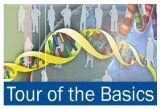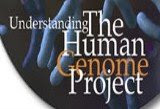 Human donor cells (red) spread through the mouse brains and trigger their repair.
Human donor cells (red) spread through the mouse brains and trigger their repair.
(Image Credit:Windrem et al.)
Life Science Space (June 5, 2008)--Human stem cells have been used to correct abnormal brain development in mice with fatal brain disorders, offering hope for treating a range of neurological disorders including some deadly childhood genetic diseases.
Those behind the new treatment hope that human clinical trials could be just a few years away.
The treatment uses human glial progenitor cells — cells that can differentiate into the glial cells that, among other things, make up myelin. Myelin, a protein that insulates the long 'arms' of nerve cells, called axons, helps the conduction of neural signals throughout the nervous system.
A team led by Steven Goldman, at the University of Rochester in New York, took the progenitor cells from white matter in the fetal human brain and injected them into the spinal cords of mutant shiverer mice shortly after their birth.
The mice, which shiver and shake as their name suggests, have severe neurological defects caused by a genetic mutation that stops them producing myelin. Without myelin, neural signals get stuck, causing potentially fatal disease.
“There’s no way we’d be able to conduct a [neural] signal very far if it weren’t for myelin,” Goldman explains. As they develop, shiverer mice become unable to walk forwards, have increasing numbers of seizures, and typically die at just 18–21 weeks of age.
Debilitating diseases
In humans, myelin losses also cause serious diseases. Multiple sclerosis is characterised by myelin loss in some areas of the brain. Some rare childhood diseases are also caused by an inability to produce myelin. One such example is adrenoleukodystrophy, a disease whose profile was raised by the film Lorenzo’s Oil, which tells the story Lorenzo Odone and his family’s battle to find a cure for his condition. Odone died last week, aged 30. “These are awful, awful diseases,” says Goldman.
Goldman has spent four years perfecting a technique to implant human glial progenitor cells into the nervous system of mice. In the experiment, published in the journal Cell Stem Cell (Windrem, M. S. et al. Cell Stem Cell 2, 553-565 (2008), Goldman used five injection sites to allow the human stem cells to penetrate the entire nervous system of the baby mice.
The researchers knew that if the mouse immune system was suppressed, preventing rejection, the mice would have a better chance of survival. So Goldman used mice that were a cross between shiverer mice and mice genetically modified to have their immune system suppressed.
The team treated 26 of these mice with 300,000 human glial progenitor cells each, 29 with a set of control injections, and left 59 untreated. All the mice deteriorated in health in the first 130 days, as is usual for shiverer mice, and by 150 days all of the control and untreated mice had died. But six of the stem-cell-treated mice survived for longer than 130 days, and four of those went on to live for 14 months, at which time they were sacrificed for analysis.
Transformation
The mice that improved showed impressive myelin growth at sites where the new cells had been implanted. “Myelination was much more than anything we’d seen,” says Goldman. The new myelin was also structurally normal.
The mice did better than just survive — as the myelin grew, the mice began to lose signs of being shiverers. They gained normal brain activity, no longer had seizures and lost much of the shakiness. “As they live longer, they slowly but surely get better,” says Goldman.
He thinks that if he can get the mice through the sick stage of their early life, perhaps by giving them anti-convulsants to stop the seizures that cause so much damage, he can improve his rescue rate.The breakthrough is “stunning”, says Ian Duncan, who studies myelin at the University of Wisconsin-Madison. The work will have greatest relevance in treating congenital childhood diseases, he says, although he warns that a practical therapy is still some way away. ”This is a therapy for the future,” he says.
“This is a good proof of principle,” says Goldman. He is optimistic that once his methods meet with the approval of the US Food and Drug Administration, clinical trials in humans may only be a few years away. There is nothing in the biology that needs to be clarified, he says: “The questions become practical.”
--------------------------------------------------------------------
Article linked: http://www.nature.com/news/2008/080604/full/news.2008.875.html
See also @
Stem cells can cure nerve disease
http://ls-space.blogspot.com/2008/06/012-stem-cells-halt-nerve-disease.html
.jpg)
.jpg)
.jpg)

.jpg)
.jpg)
No comments:
Post a Comment